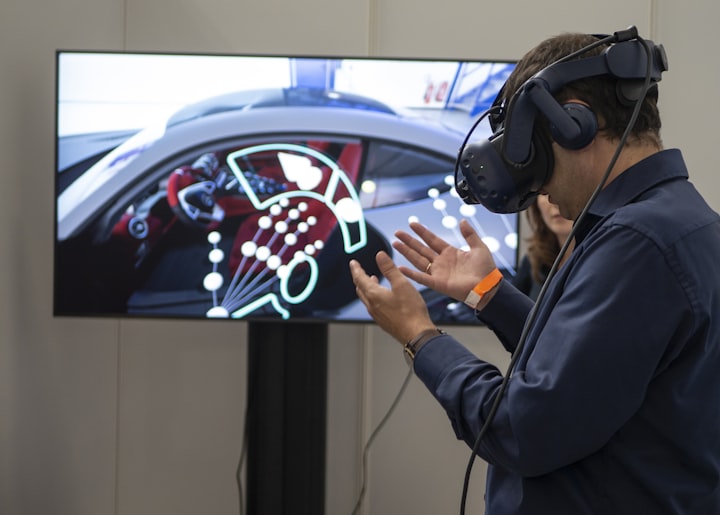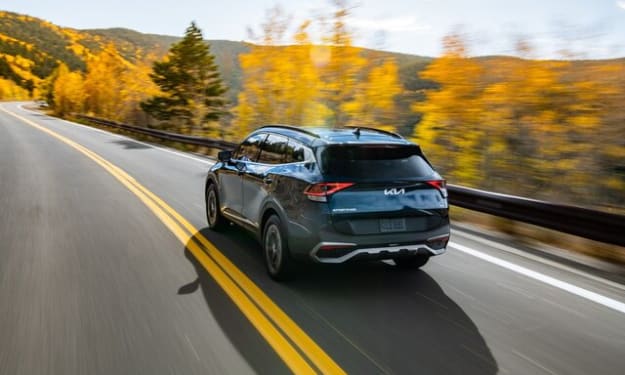The use of Virtual and Augmented reality in the Automotive industry
Detailed Insider Report!
The automotive industry has always been at the forefront of technological innovation, and the use of virtual and augmented reality is no exception. In recent years, automakers have been exploring the use of these technologies to enhance the design, manufacturing, and marketing of their vehicles. From virtual showrooms to augmented reality maintenance and repair guides, the potential applications of virtual and augmented reality in the automotive industry are vast and varied.
One of the most significant applications of virtual reality in the automotive industry is in the design and development process. Virtual reality allows designers and engineers to create and test new vehicles and features in a virtual environment, which can help to speed up the design process and reduce costs. With virtual reality, automakers can create detailed, 3D models of their vehicles, which can be explored and evaluated from any angle, allowing designers to spot potential design flaws or areas for improvement before the vehicle is ever built.
In addition to design, virtual reality is also being used in marketing and sales. Automakers are creating virtual showrooms that allow customers to explore their vehicles in a fully immersive environment. This can be particularly useful for high-end or exotic vehicles that may not be available for test drives at local dealerships. By using virtual reality, automakers can give customers a realistic experience of the vehicle and its features without having to physically transport the vehicle to a showroom.
Another application of virtual reality in the automotive industry is in training and education. Virtual reality can provide a safe and realistic environment for training automotive technicians in the latest repair and maintenance techniques. By using virtual reality, technicians can practice repairing and maintaining vehicles in a virtual environment, allowing them to gain experience without the risk of damaging an actual vehicle. This can help to improve the quality of repairs and reduce the risk of errors, which can save time and money for both the technician and the customer.
Augmented reality is also being used in the automotive industry, particularly in maintenance and repair. Augmented reality can be used to provide real-time, step-by-step instructions for maintenance and repair tasks, allowing technicians to quickly and accurately diagnose and repair issues. This can improve the speed and quality of repairs, reducing downtime and increasing customer satisfaction.
One of the potential benefits of virtual and augmented reality in the automotive industry is the reduction of physical waste and resource use. With virtual showrooms and design processes, automakers can reduce the need for physical prototypes and test vehicles, which can save both time and resources. This can also help to reduce the environmental impact of the automotive industry, as the production of vehicles and components can be resource-intensive and energy-consuming.
Moreover, the use of virtual and augmented reality in the automotive industry can also help to increase accessibility and inclusivity. By using virtual showrooms, automakers can reach a wider audience of potential customers who may not have access to physical dealerships or showrooms. This can also help to increase the inclusivity of the industry, as virtual showrooms can be more easily designed to accommodate people with disabilities, such as wheelchair users, who may face physical barriers when visiting a physical showroom.
However, there are also potential drawbacks to the use of virtual and augmented reality in the automotive industry. One of the main concerns is the potential for a reduction in the quality of customer experiences. While virtual and augmented reality can provide a realistic and immersive experience, it may not be able to replicate the feeling of sitting in a physical vehicle or interacting with physical features. This may lead to a reduction in the emotional connection that customers feel with their vehicles, which could impact customer loyalty and satisfaction.
Furthermore, the use of virtual and augmented reality may also exacerbate existing social and economic inequalities. While virtual showrooms and maintenance guides can increase accessibility and inclusivity, they may also require expensive equipment, such as virtual reality headsets, which may be inaccessible for low-income individuals or those living in developing countries.
In conclusion, the use of virtual and augmented reality in the automotive industry has the potential to improve efficiency, reduce waste and resource use, increase accessibility and inclusivity, and enhance the customer experience. However, it is important for automakers to consider the potential drawbacks and to ensure that these technologies are implemented in a responsible and sustainable way. By doing so, the automotive industry can continue to lead the way in technological innovation, while also promoting environmental and social responsibility.
About the Creator
AutoTech Insider
Entrepreneur | Automotive Expert | RPA Developer






Comments
There are no comments for this story
Be the first to respond and start the conversation.